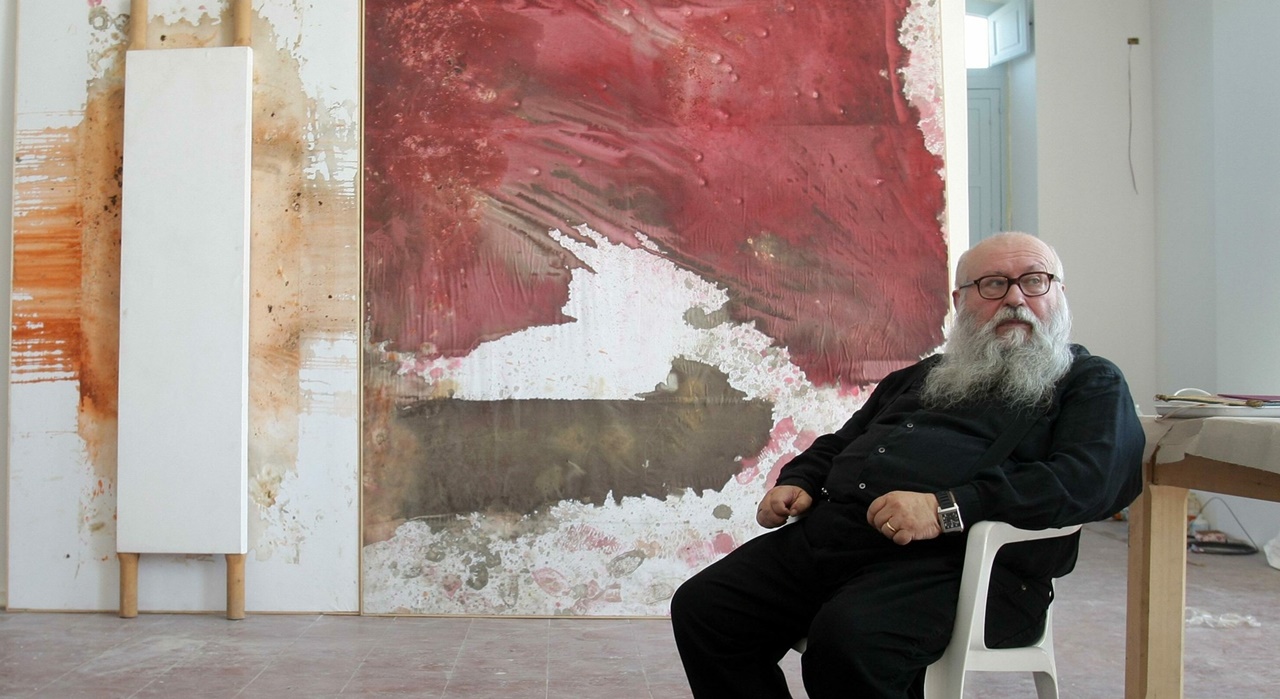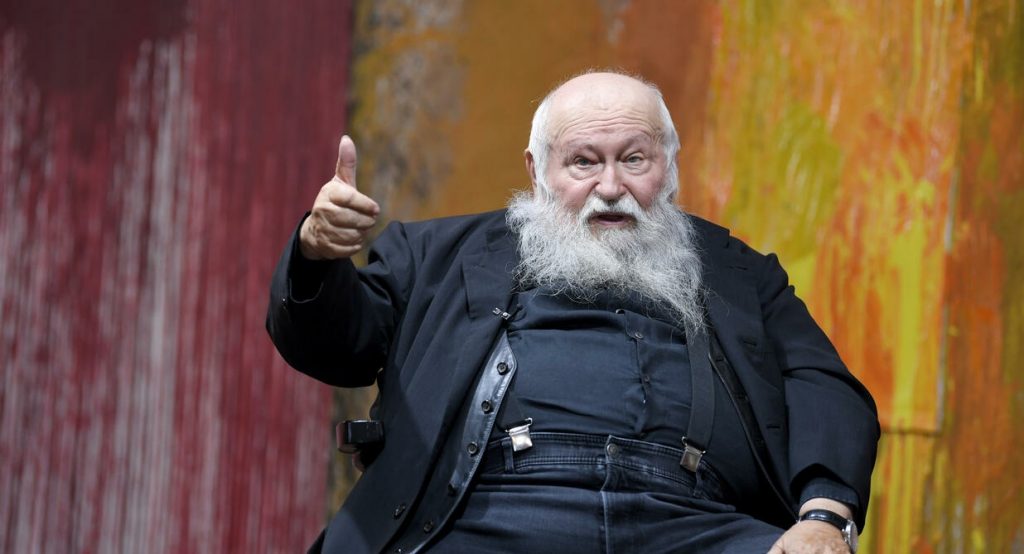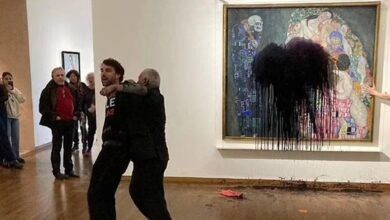Action artist Hermann Nitsch died

The world-famous action artist Hermann Nitsch died on Monday in Mistelbach hospital after a serious illness at the age of 83.
This was confirmed by his wife on Tuesday morning. According to Rita Nitsch, he fell asleep “very peacefully”. The first two days of the “6-day game”, which was canceled last year due to corona, will still take place on July 30th and 31st. “We promised him that.”
Born in Vienna on August 29, 1938, his childhood was shaped by the turmoil of war. Only a few months before he saw the light of day, Austria was annexed to Nazi Germany. His father died in the war, Nitsch was raised by his mother alone. “I was really scared to death at that age and understood what it means to die, to lose your apartment and not have a home. I do believe that this dramatic situation has left something in me,” Nitsch is quoted as saying.
After the war, Nitsch attended the Graphic Teaching and Research Institute in Vienna, and his first works already showed his interest in religious subjects, which he was to deal with throughout his life. Originally he even wanted to be a church painter, his diploma thesis was about a Bible cover. At the same time, however, his idea for the Orgien-Mysterien-Theater came about – shaping everything that was to come after it: Nitsch is still pursuing an all-encompassing approach in which he links text, music, painting and performance as a whole.
Co-founder of Viennese Actionism
In the 1960s, thanks to the associated actions, which initially used paint, but gradually involved blood, entrails and animal carcasses, he became a co-founder of Viennese Actionism – and was soon confronted with harsh criticism, hostility and imprisonment. But while the public sometimes reacts with incomprehension to Nitsch, the first major successes are also appearing. As a result, he took part in the documenta in Kassel, exhibited in New York and London and consistently pursued his vision of the total work of art.
Nitsch recently accepted with a certain composure that conservative and right-wing parties have repeatedly interfered with his work, some of them to this day. “I have nothing left for politics,” he once said in an interview, “but there are political views that still fight my work.” He himself no longer has the strength to take up all these fights. It is probably precisely his argumentative nature and his unwavering will to follow his own ideas that ultimately led to his establishment in the art world.
Climax of his work with “6-Day-Game”
Soon after the purchase of Prinzendorf Castle in the early 1970s, the property became not only a personal, but also an artistic focal point for Nitsch. The purchase was made possible by his second wife Beate, who later died after an accident. Numerous performances of the Orgien-Mysterien-Theater were performed in the castle and in 1998 there was also the legendary “6-day play”, which the artist himself regards as the high point of his work to date. The event generated enormous media hype and excitement.

Mourning for the artist Hermann Nitsch
The Austrian, who is one of the best-known representatives of Viennese Actionism, died on Monday evening at the age of 83.
The action artist Hermann Nitsch is dead. This is reported by the ORF, citing his family. Accordingly, he died at the age of 83 on Monday evening. Nothing was known about the cause of death.
He felt persecuted in Austria because of his painting actions and his bloody orgy theater, sought refuge in Germany and then became an honored “professor” in his homeland. His pouring pictures made Hermann Nitsch world famous. Most recently, he caused a stir last year with an action at the Bayreuth Festival on the Green Hill, and was partially booed for it.
There, Nitsch literally accompanied a performance of “Valkyrie” and had his team pour paint and pelt huge white walls. However, there were cheers from other parts of the audience. Normally, Nitsch primarily uses animal blood and intestines for his painting actions – he refrained from doing so in Bayreuth.
Herman Nitsch went to Germany in the 1960s
As a representative of Viennese Actionism, Nitsch was almost considered an outlaw at home. “Happenings are those dubious events that consist of a lot of slapstick and little art. Animals are slaughtered, young girls are painted with egg yolk, and in doing so they offer paying guests a show that is a cross between striptease and absurd theatre,” said the ” Kronen-Zeitung” in 1966, when Nitsch and his gallerist were sentenced to six months of strict arrest for religious disorder – suspended on probation. That was the reason for Nitsch to flee to Germany.
The excitement wasn’t that great there, according to Nitsch, there was a lot more respect. “I had found many admirers and supporters. My colleagues were also much fairer and more comradely.” Joseph Beuys wrote a letter of recommendation for him, said Nitsch, who counted the performance artist, who died in 1986, among his friends. Nevertheless, there was trouble here too, for example about his planned appointment as a professor at the Städelschule in Frankfurt. Many events have been banned. But: In Germany, in contrast to Austria, “the freedom of art” was already legally anchored, recalls Nitsch, who took part in the documenta twice.
“My music has its origin in the scream of fear”
His music is part of the total work of art. It’s a matter of taste. “My music originates from screams, screams of fear, groans, grunts, vomits,” says Nitsch. Quite a few bars of his compositions could also have been recorded in football stadiums or at the Oktoberfest. And even the titles of the compositions sound like sensory overload: “Piano symphony for 100 pianists on 33 pianos and a synthesizer” was the title of a world premiere in November 2012.
Nitsch was recognized late in Austria. A special honor was the award of the state prize and the title of professor in 2005. Incidentally, when he was young, Nitsch drew children, painted mountain landscapes and copied classical masters to earn money. “I could still do it today, but I have no interest in it,” he once said. Most recently, he saw himself as a kind of total work of art. “It’s very boastful, but I feel like a painter, I feel like a poet, a tragedian, a composer, a psychoanalyst, and ultimately actually a philosopher.”



